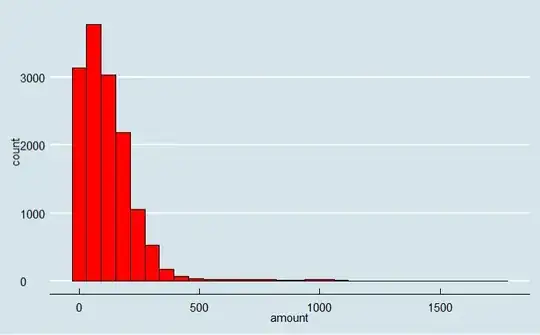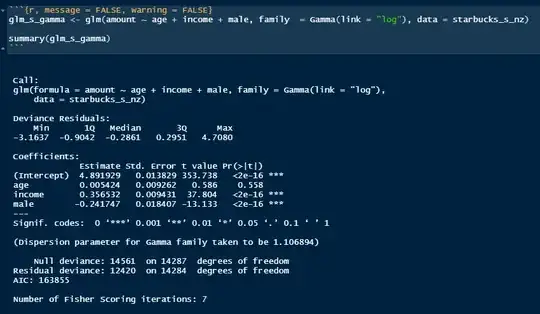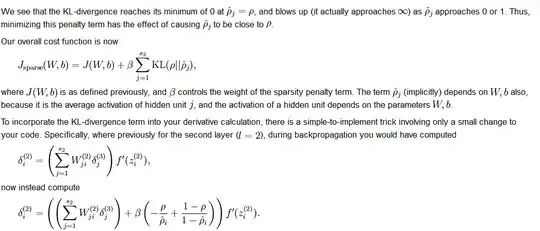I have a positively skewed continuous data (no zeros), representing transactions by amount.
Variables age and income were standardized, amount - not.
I tried to use gamma distribution with Gamme(link = log).
I have Residual deviance: 12420 on 14284 degrees of freedom.
My residuals output:
What else can I try to improve this model?
I have seen an interesting question about the same type of data and people suggested several less common models (I never heard about them) and cannot find than question now.


